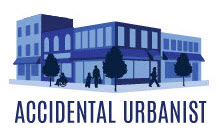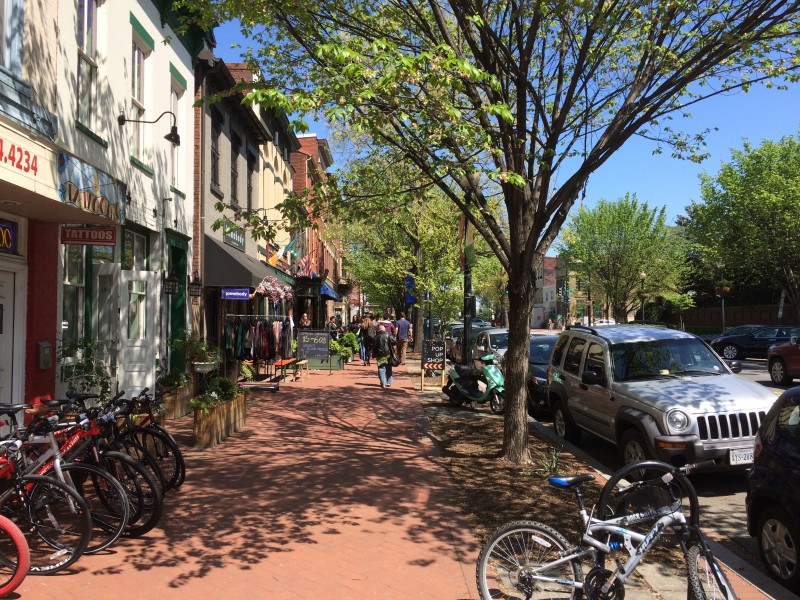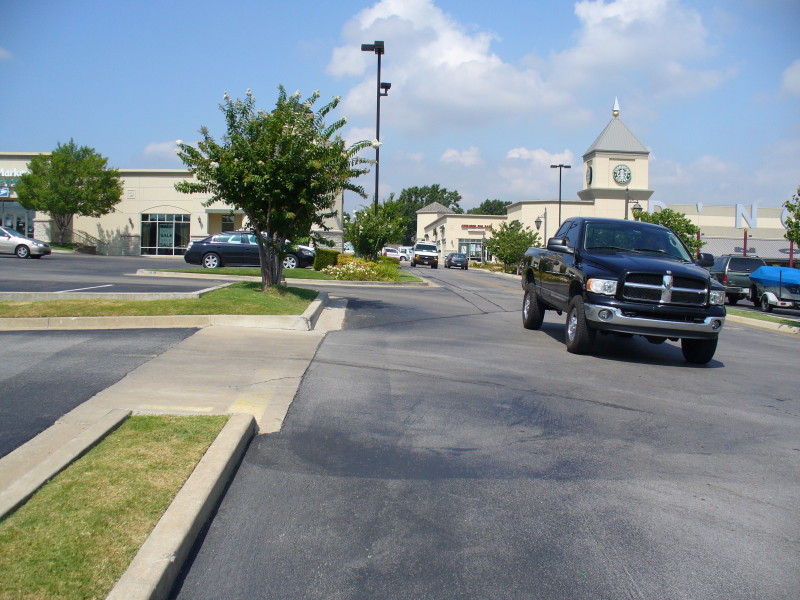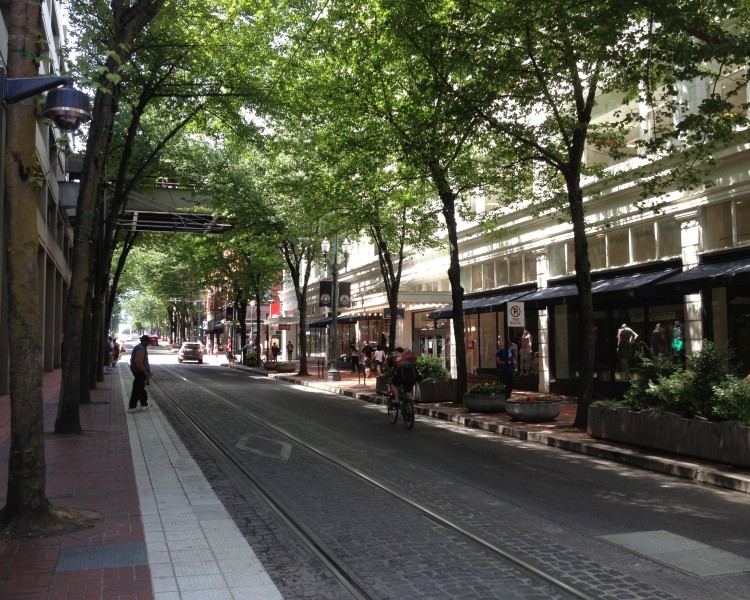It’s that time of year again. That brief, exuberant period in January, when gyms are crowded with people whose New Year resolutions haven’t yet expired on Super Bowl Sunday.
Since everyone’s focused on fitness, it seems like the perfect time to talk about healthy cities.
And whether you’re talking about a city’s fiscal health, or the physical health of its citizens, the same rules apply. In fact, you can easily determine if your neighborhood is a fiscally/physically healthy place by answering one, simple question.
When you’re on foot, does it feel good?
That’s it. That’s all you need to know. And here’s why.
When you’re walking and a place makes you feel good, certain conditions are being met. You are probably experiencing a sense of comfort, connection, discovery and delight.
Older, historic parts of town tend to get this right. Here you’ll find interesting architecture, human-scaled buildings, a diversity of destinations, narrow streets, and lively sidewalks.
Because our ancestors traveled on foot, they built for people, and it shows.
Contrast that with how we build today.
If this picture makes you feel exposed, unsafe, disconnected and anxious…congratulations! You’re human! If you think a lot of space is being wasted, you’re also correct. And if it you would never choose to walk to this destination, you’re not alone.
Which gets us back to the connection between fiscal and physical health, and the magic of traditional development patterns.
Those old geezers really knew what they were doing.
If your town has an intact, historic Main Street, then you have a terrific example of what I mean by traditional development. These neighborhoods weren’t planned to meet a single purpose for a single developer (for example: “regional shopping center”). Instead, they grew up organically over time to meet the varied needs of many different people, all of whom lived nearby and traveled on foot.
And because these places were built before car-centric development became a fad, they are much more efficient at utilizing space.
In traditional neighborhoods, buildings abut the sidewalk, and narrow storefronts stand shoulder to shoulder along the street. This eliminates wasted space and shortens the distance between destinations. It also creates the perfect environment for window shopping. Meanwhile, two- and three-story buildings allow a mixture of uses, while doubling or tripling the amount of usable space on modest-sized parcels of land.
As it turns out, these unassuming little Main Streets are turbo-charged economic engines that generate an incredible amount of tax revenue per square foot. And because they utilize space so efficiently, it costs a lot less to provide and maintain the public infrastructure they require.
And then there’s the alternative.
Compare that to the super-sized, asphalt wastelands that comprise 99% of all new development today. Single-story, single-use developments that are spread apart by great distances result in far higher public infrastructure costs while generating a lot less tax revenue per square foot of land.
This is the modern development pattern that Chuck Marohn calls the Suburban Experiment, and it’s crippling municipalities.
But it’s not just bad for your city’s bottom line.
All that waste is bad for your waist, as well.
Why? Because those very same factors that make car-centric developments terrible for city coffers also make them bad for your physical health.
Meanwhile, the very qualities that make traditional developments efficient economic generators also tend to create neighborhoods where you can easily use your muscles to get from place to place.
Where would you rather walk or bike?
Here?
Or here?
All that free parking is making you fat.
There’s a word for our modern, suburban style of car-centric development: “obesogenic,” which literally means “tending to cause obesity.”
We don’t simply create places where people aren’t encouraged to walk. We create places that punish people who try.
Wide streets with fast moving traffic make drivers happy, but they’re deadly to pedestrians. Buildings located far from the street provide lots of space for parking, but make it impractical for people to walk, bike or use transit to reach their destinations. (They also create asphalt moonscapes that are inhospitable to humans and lousy for the environment.) Separation of uses–like segregating residential from commercial, and office from retail–means that everyone must travel even further to meet their daily needs.
These are places where only the most desperate individuals venture forth without the protective carapace of a car. But you can’t blame folks for driving. In these environments; it’s often the only rational choice.
And yet, when you place those very same people in neighborhoods that were built for folks on foot, an amazing thing occurs.
People walk.
And when people start walking and biking, even to run a few short errands, another magic thing happens. Suddenly, they get the recommended 30 minutes of daily exercise, without even trying.
Because when you live in a walkable place, you don’t just run errands, you burn calories. You also increase your brain function, reduce the risk of chronic disease, strengthen your muscles, improve your balance, shrink your waistline, and extend your life.
But beyond that, when people get out of their cars, they connect with people.
Instead of your daily commute being a time of stress and frustration, you get some fresh air and sunshine. You cross paths with people and smile. You speak to strangers. You open your life to happenstance and serendipity. You notice beauty.
And you never have to go to the gym.





Great post! The benefits of walking are even more extensive than you mention. See “The Brilliance of Walking.”
http://karenlynnallen.blogspot.com/2013/11/the-brilliance-of-walking.html
However, more detail would no doubt have bogged your main argument down–the importance of walkability to both fiscal health and physical health. This needs to be shouted from the rooftops of America loudly and often.